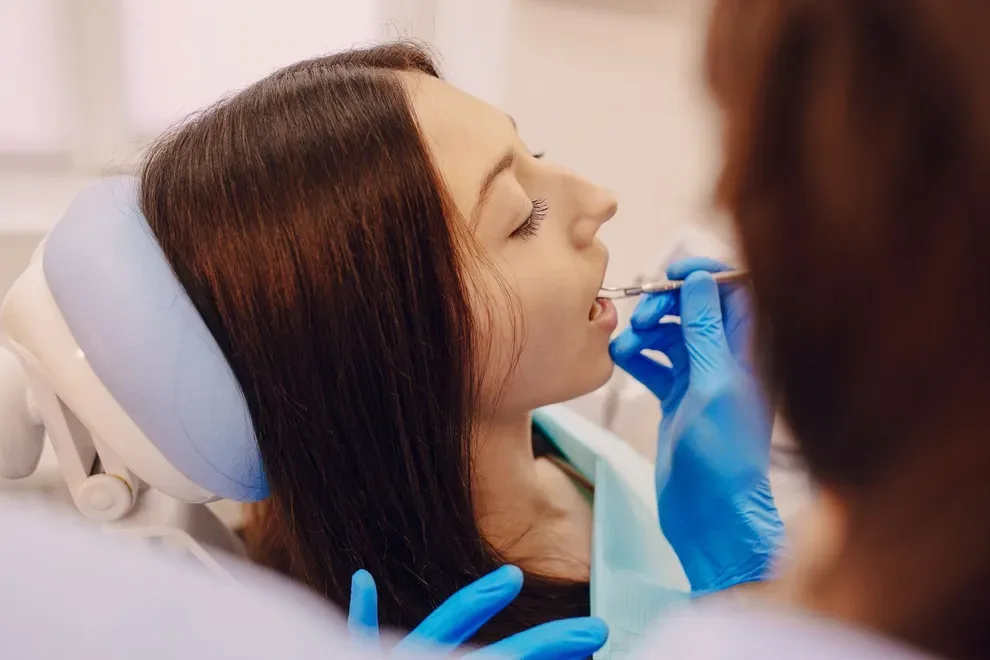What are Tonsil Stones - Causes, Symptoms & Treatment

Table of Contents
- What are Tonsil Stones?
- Causes
- Signs
- How to Treat
- Prevention
- FAQ
- References
Tonsil stones are hard lumps of calcified debris that form on tonsils, usually in adults. Stones can vary in size and color, but they are not considered a serious condition. The most obvious symptom is bad breath.
What are Tonsil Stones?
Tonsil stones, also known as tonsilloliths, are hard lumps of calcified debris that form on your tonsils. They can be large or small and can appear whitish or yellowish.
Although they can affect children, they are more prevalent in adults. They also affect people with large tonsils as they have deeper crevices.
Tonsil stones are not attached to the tonsils. Instead, they are stuck in the crypts and tiny holes found on the tonsils. They are rarely serious, but they may be bothersome to some people because they can be uncomfortable and can cause bad breath.
Tonsil stones often can be prevented with good and consistent oral hygiene and with a handful of home remedies. Larger or recurring cases may require more medical attention.
Causes of Tonsil Stones
Tonsils are tissues at the back of your throat that filter bacteria and viruses from getting into your body. They resemble sponges and have tiny holes and crevices known as crypts. Although they filter out germs, tonsils can also trap debris and bacteria.
When bacteria, food particles, mucous and dead cells accumulate in the crypts, the resulting debris hardens and forms tonsil stones.
The primary symptom of tonsil stones is bad breath.
The main risk factor of tonsil stones is poor oral hygiene. Individuals suffering from tonsil inflammation or recurring tonsillitis are also at high risk of developing tonsilloliths.
Signs You May Have Tonsil Stones
Tonsil stones manifest in a variety of ways. The most common symptoms are:
Bad breath (halitosis) that accompanies a tonsil infection
Bad taste in your mouth
Sore throat or pain while swallowing
Coughing
Difficulty swallowing foods or drinks and feeling like something is stuck in your throat
Tonsil infections that don’t get better even after treatment with antibiotics
White patches on tonsils that may get bigger with time
Pain in your ears
Pain when you touch the outside of your neck
Swollen tonsils
Breathing difficulties (when large tonsil stones obstruct your airway)
It’s possible that you can have tonsil stones and not experience any symptoms beyond noticing white clumps on your tonsils, especially if stones are small. In such cases, the only way to detect them is through a CT scan or an X-ray.
How to Treat and Manage Tonsil Stones
Tonsil stones typically do not require any treatment. They usually go away on their own.
Instead, treatments focus on managing symptoms as opposed to dealing with the calcified stones. Because of that, you can deal with tonsil stones by yourself at home or seek professional help from your doctor.
Many of the suggested treatments for these deep-mouth stones are home remedies and not antibiotics.
Home Remedies for Tonsil Stones
You can manage smaller tonsil stones at home using simple remedies such as pressing them out gently using your fingers and a cotton swab or pushing them out with a toothbrush. Be careful when using objects to dislodge tonsil stones, as you can scratch your tonsils and trigger an infection. Alternatively, you can gargle using warm, salty water to remove the lumps.
Gargling is especially advantageous because salty water can help eliminate bad breath and also soothe your throat. Gargling shortly after eating is recommended because it can help prevent food debris from lodging in tonsil crypts.
Other ways to remove the tonsil stones include coughing vigorously and using a low-pressure irrigator to wash them out.
Treatment Options for Tonsil Stones
Seek medical attention for tonsil stones that recur, are too big, or cause severe or bothersome symptoms. Available treatment options include:
Medication. Your doctor can use antibiotics and antihistamines to manage the symptoms of tonsil stones. Antibiotics lower the number of bacteria in your tonsils and also treat any resulting bacterial infection. Antihistamines, on the other hand, reduce mucus from allergies or sinus problems.
Cryptolysis. The treatment uses laser technology or radio waves to reduce or remove tonsil crypts where the tonsil stones are located.
Tonsillectomy. It refers to the surgical removal of tonsils. Tonsillectomy is ideal for recurring tonsil stones as it eliminates their risk of developing in the future.
Surgical removal. Surgical removal of tonsil stones is ideal for unusually large, and symptomatic tonsil stones.
How to Prevent Tonsil Stones
The best way to prevent tonsil stones is by maintaining proper oral hygiene. You should floss, brush your teeth at least twice a day, and gargle with salty water after meals. Doing so prevents bacteria, food particles and other debris from sticking to your tonsils and accumulating to form tonsil stones.
Also, avoid smoking and drinking alcohol, as they make your mouth dry and increase your risk of developing tonsil stones. Drinking a lot of water can help you hydrate and wash away any debris that may stick to your tonsils.
Tonsil stones are common and rarely result in serious health complications. If they become a problem, speaking to a doctor will help you find a permanent solution.
Tonsil Stone FAQ
Tonsil stones are small white or yellow clumps of calcified food debris and bacteria that form in the back of your mouth. Small stones can look like little pimples. Larger stones can look like irregularly shaped pebbles. A severe case of tonsil stones can make it appear that you have a infection in the back of your throat.
Tonsil stones are not contagious. They do not form because of a virus. They form from small food particles and bacteria that get trapped in tiny holes in your tonsils.
Tonsil stones can be one cause of bad breath, or halitosis. In fact, if you spot more than a couple of tonsil stones in the back of your mouth, odds are you do not have fresh breath.
Some people are more prone to getting tonsil stones than others. The reasons for this vary, and they include the fact that the individual needs to have their tonsils removed. Diet and oral hygiene habits can also contribute to someone regularly developing tonsil stones.
